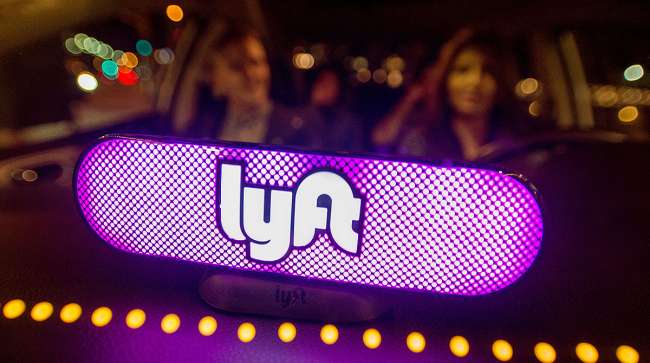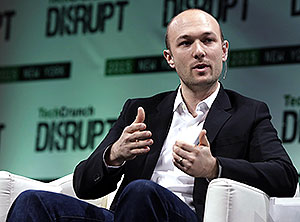Lyft Reveals Big Growth but No Profits as It Readies for IPO

NEW YORK — Lyft revealed that it is growing quickly ahead of its initial public offering but continues to bleed money and may struggle to turn a profit, according to a federal filing.
The company released its financial details for the first time March 1, giving the public a glimpse into its performance before deciding whether to buy into the ride-hailing phenomenon.
Lyft reported $2.2 billion in revenue last year — more than double its $1.1 billion in revenue in 2017. That continued a growth trajectory that saw revenue skyrocket more than 200% in 2017 compared with 2016, when the company brought in $343.3 million.
But Lyft still is losing money and its executives warned it may struggle to turn a profit, according to the filing. The company lost $911.33 million last year, about $223 million more than in 2017.
Its cash balance also is shrinking. Lyft had $517,690 in cash and equivalents at the end of last year, about half of what it had at the end of 2017. And although Lyft is taking in more cash, it is spending more on initiatives such as programs to retain drivers and discounts to lure riders.
Lyft has been in a race with Uber to be first to offer its stock to the public, and has positioned itself as the affable alternative to its larger and more ubiquitous rival. Uber, which struggled with public relations setbacks in the past, expects to file its IPO later this year.
Together, the two could raise billions of dollars to fuel their expansions and give investors an opportunity to see how the companies plan to become sustainable.
Lyft’s filing says that its co-founders — CEO Logan Green, 35, and President John Zimmer, 34 — will keep significant control of the company after it goes public and “will be able to significantly influence any action requiring the approval of our stockholders,” including the election of board members, a merger, asset sales or other major corporate transactions.
The company’s U.S. market share was 39% in December 2018, up from 22% in December 2016, according to the filing, citing growth from new drivers and riders as well as increased ride frequency. It reported 30.7 million riders and 1.9 million drivers in more than 300 cities in 2018, and has given more than 1 billion rides since its inception in 2012, according to the filing.

Logan Green. (Richard Drew/AP)
Lyft had been increasing its share of the market in recent years while Uber was dogged by reports that drivers accosted passengers and that the company allowed rampant sexual harassment internally — revelations that ultimately led co-founder Travis Kalanick to resign. Uber has been working to repair its image under CEO Dara Khosrowshahi.
Lyft allowed customers to tip drivers earlier than Uber, building into its brand the sense that it treats drivers better than its main competitor. The company’s drivers have earned $10 billion since 2012, according to the filing, and 91% drive fewer than 20 hours per week.
Bookings — the amount of money spent by customers — are rising dramatically, which Lyft will try to emphasize for investors. The company had just more than $8 billion in bookings last year, 76% more than in 2017 and more than four times the number from 2016.
“We believe this is a key indicator of the utility of transportation solutions provided through our multimodal platform, as well as the scale and growth in our business,” the company said in the filing.
By being the first company in the ride-hailing category to go public, Lyft is likely to attract institutional investors who want to get in on the sector, said Rohit Kulkarni, senior vice president of research at Forge. It also gives Lyft the chance to define what metrics the industry will be measured on because it can choose which details to disclose, such as the number of rides or drivers, or whether it will break down revenues by geography or product, putting pressure on competitors to reveal the same information, he said.
Lyft, known for the pink moustaches that used to adorn car grilles, was valued at just more than $15 billion last year. Besides ride-hailing, it offers shared car, bike and scooter rides. The company purchased Motivate, the largest bike-sharing company in the country, in November.
Based on the figures in the filing, and assuming steady revenue growth of more than 50% in the next year, institutional investors are likely to value Lyft at $20 billion to $25 billion, Kulkarni said.
The next step is for Lyft managers to go on the road to woo investors, presenting details and fielding questions from potential buyers in hopes of drumming up interest. That will help the company determine the price of its shares when it goes public.
“Lyft has clearly demonstrated progress along its pathway to profitability … but the key question is whether Lyft can accelerate its pathway to profitability,” Kulkarni said. “On its upcoming roadshow, public equity investors would have a lot of tough questions for Lyft’s management on this topic.”
In its risk assessments, Lyft outlined the difficulty of attracting and retaining drivers and riders in a cost-effective manner, complying with laws and regulations, and being able to manage growth and expand beyond the United States and part of Canada.
The company conceded that it has lost money since it started in mid-2012, its expenses are increasing as it launches new services, and it may never turn a profit.
“We have incurred net losses each year since our inception, and we may not be able to achieve or maintain profitability in the future,” the company said.




